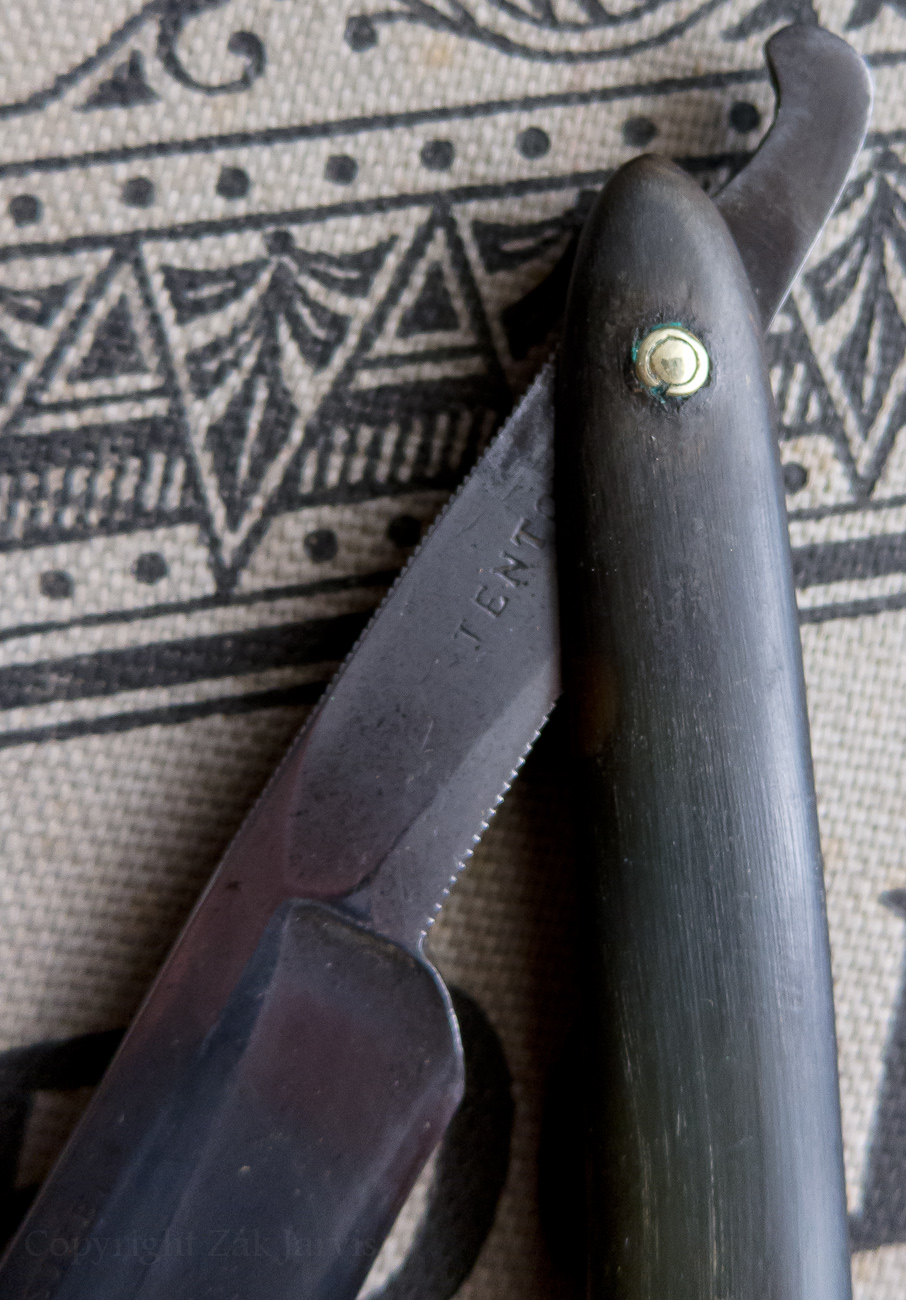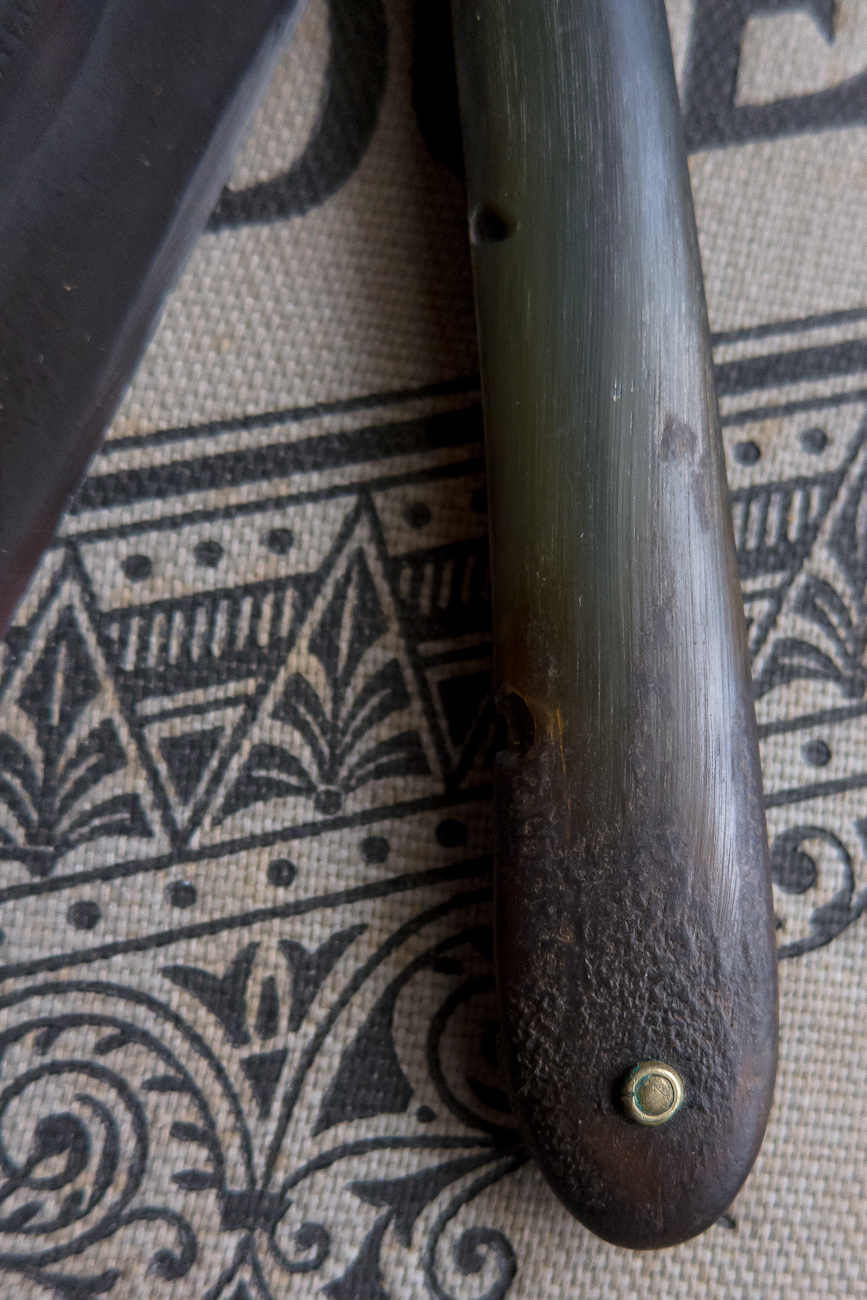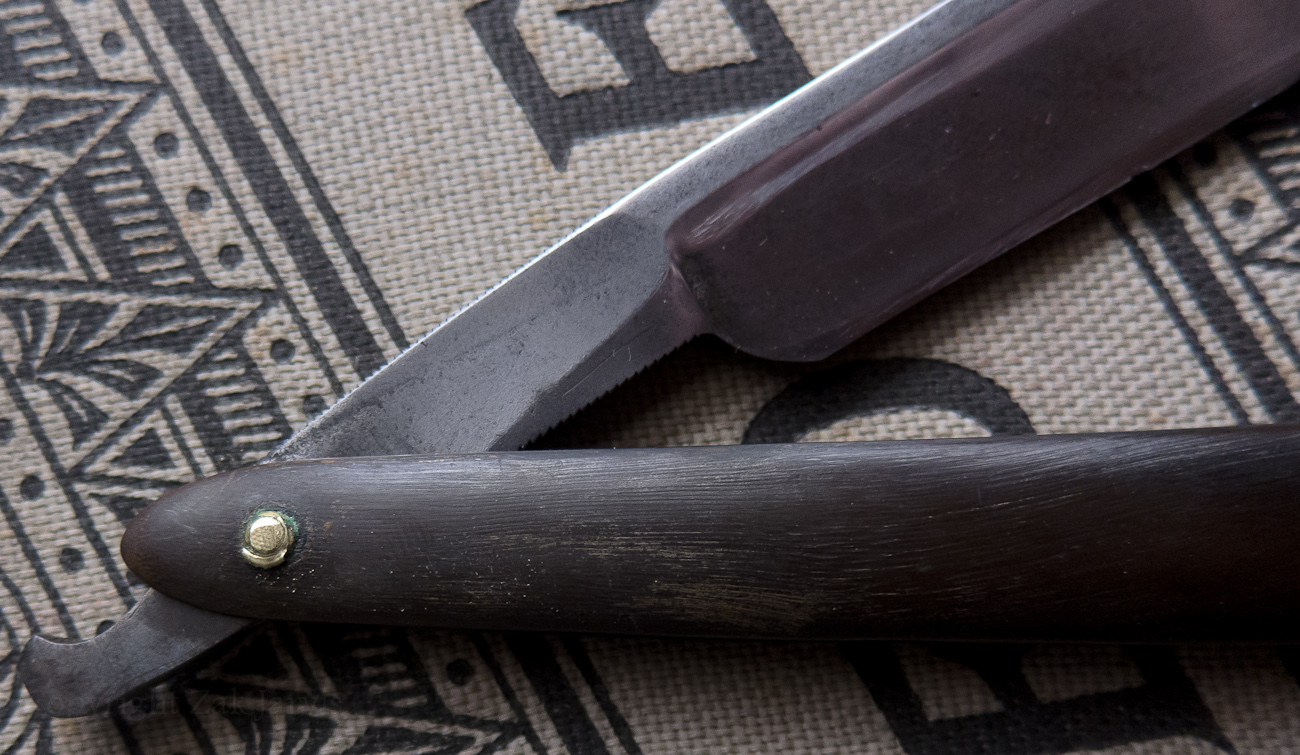Results 1 to 10 of 17
Threaded View
-
12-02-2012, 07:31 PM #1
 Chasing 1820's factory finish: Stenton Improved Silver Steel
Chasing 1820's factory finish: Stenton Improved Silver Steel
This is the razor before I restored it.






In that last picture you can see that I started to file off the pivot pin before I stopped to take pictures of the unrestored blade.
See, I got this a few days ago and I wanted to shave with it. Normally, I just tape the spine, hone and shave. But this was a bit loose in the scales and when I started tamping down the pins the pile-side collar cracked. I took that as a sign to just do a full (albeit light) restore. But I wanted to go for the 1820's factory finish, a finish I don't often see done in restorations.
Specifically, the original treatment of the blade was to polish the whole piece to a glaze finish (for me, that equates to about 600 grit sandpaper) and then to only take the blade face to the crocus wheel (which is sort of your modern 'mirror finish', most commonly done with buffers). I occasionally see razors with enough of the original finish to know this looks great.
That in mind, I took everything apart and ran the scales and wedge through the ultrasonic jewelry cleaner. Five or six times. It had years of soap and grime on it (as you can see in some of the pictures) and I knew the jewelry cleaner would be a much easier way of getting that stuff off than just sanding. In the end, it got me about 80% of the way.
In the next post I'll show off the completed piece and talk about the stuff I wish I'd done better.-Zak Jarvis. Writer. Artist. Bon vivant.


 7Likes
7Likes LinkBack URL
LinkBack URL About LinkBacks
About LinkBacks







 Reply With Quote
Reply With Quote